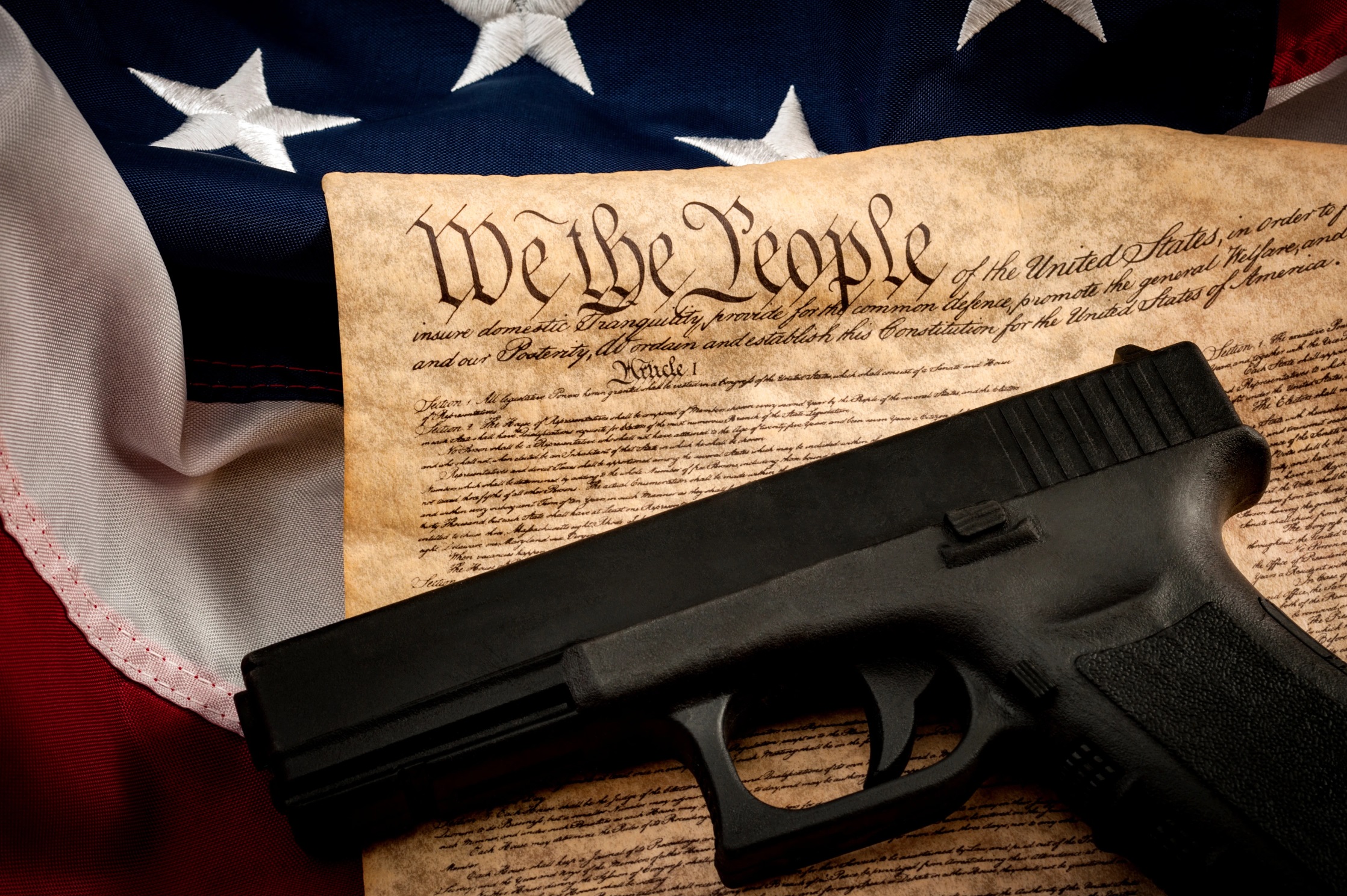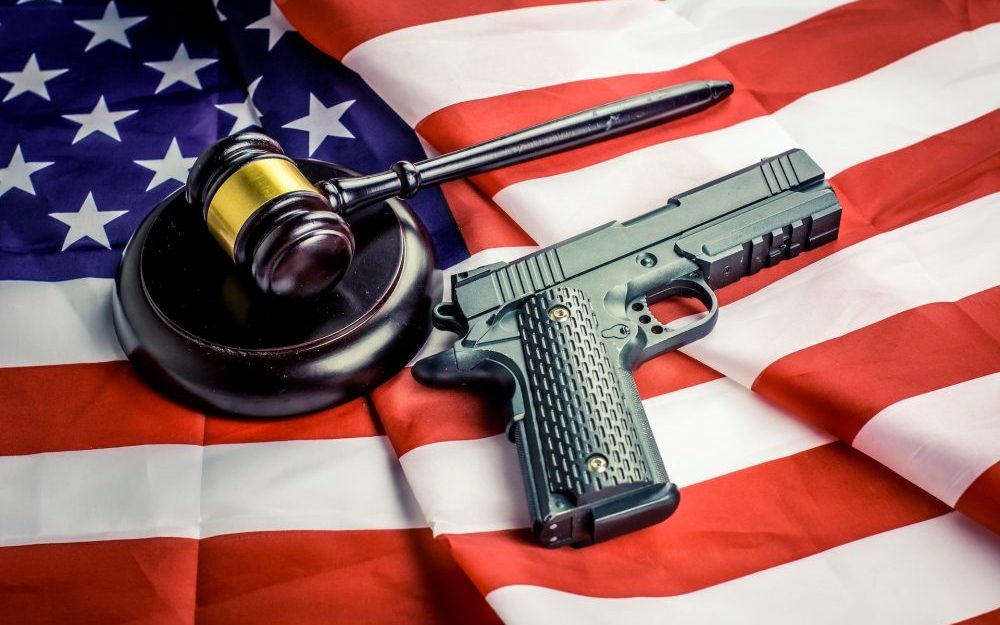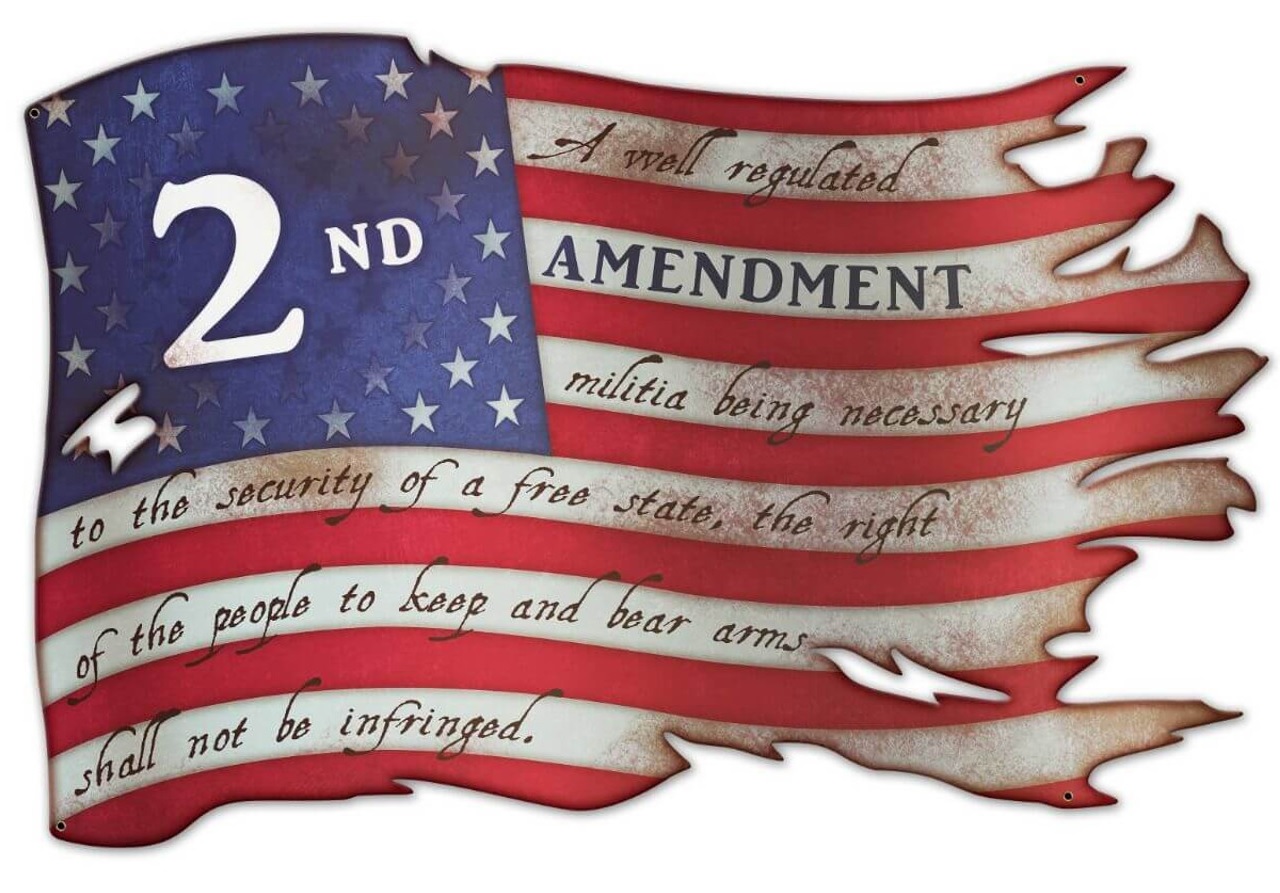Understanding the Significance of the Second Amendment
The Second Amendment of the United States Constitution, often referred to as the cornerstone of American democracy, has been a subject of ongoing debate and controversy. This amendment, which states, “A well regulated Militia, being necessary to the security of a free State, the right of the people to keep and bear Arms, shall not be infringed,” has been interpreted and reinterpreted throughout history, shaping the landscape of gun ownership, individual liberties, and public safety in the nation. In this article, we will delve into the historical background, various interpretations, societal impact, and policy considerations surrounding the Second Amendment, seeking to shed light on its significance for American democracy and its relevance in the modern era.
Defining the Second Amendment
When it comes to the United States Constitution, few amendments stir as much debate and controversy as the Second Amendment. Officially known as the Second Amendment to the United States Constitution, it protects the right of the people to keep and bear arms. But what exactly does this mean?
Simply put, the Second Amendment guarantees individuals the right to own firearms. However, like many constitutional provisions, this right is not absolute and is subject to interpretation and regulation. This has led to passionate discussions on the true meaning and scope of the Second Amendment.
Historical Context
To truly grasp the significance of the Second Amendment, we must journey back to the birth of the American nation. The Founding Fathers, fresh from their victory in the Revolutionary War, sought to establish a government that would reflect the ideals of liberty and ensure protection against potential tyranny.
The colonists’ experience under British rule, including the confiscation of firearms, played a pivotal role in shaping their concerns about governmental abuse of power. This historical context sheds light on why the Founding Fathers deemed it necessary to include the Second Amendment in the Constitution, as a safeguard against potential threats to individual freedom.
Origins and Intent of the Second Amendment
The Founding Fathers and Their Motivations
The beliefs and motivations of the Founding Fathers heavily influenced the origins and intent of the Second Amendment. Many of them, such as George Washington and Thomas Jefferson, were ardent supporters of individual liberties and the idea of an armed citizenry as a bulwark against tyranny.
The Founding Fathers recognized that an armed populace would serve as a deterrent to potential oppressors, both foreign and domestic. They believed that individuals should have the means to defend themselves, their families, and their newly formed nation if necessary.
Debates and Discussions during the Constitutional Convention
During the Constitutional Convention of 1787, the Founding Fathers engaged in vigorous debates regarding the necessity and wording of the Second Amendment. There were disagreements about the extent to which the right to bear arms should be protected, with some fearing anarchy and others championing the fundamental right of self-defense.
The final wording of the Second Amendment represents a compromise that aimed to strike a balance between individual rights and societal order. This compromise, however, left room for future interpretations and ongoing discussions about the true scope of the Second Amendment.
The Right to Bear Arms: Interpreting the Second Amendment
Originalist Interpretation
The most recognized approach to interpreting the Second Amendment is through originalism, which seeks to understand the Framers’ intent at the time of its drafting. Originalists argue that the right to bear arms primarily pertains to self-defense, both from criminal elements and potential government infringement.
Originalist interpretations emphasize the individual’s right to possess firearms and resist any encroachments on this right. They view the Second Amendment as a crucial safeguard against tyranny and an essential aspect of personal autonomy.
In Support of the Originalist View
The originalist interpretation of the Second Amendment, positing that the right to bear arms is an individual right, holds validity for several compelling reasons. Proponents argue that examining the historical context surrounding the amendment’s ratification is crucial to understanding its true intent. They contend that based on the Founders’ beliefs and writings, including those of James Madison, who drafted the Bill of Rights, the Second Amendment was intended to protect an individual’s inherent right to self-defense and resistance against potential tyranny. Moreover, originalists emphasize that this interpretation aligns with Supreme Court rulings such as District of Columbia v. Heller (2008), which affirmed the individualistic nature of gun ownership. They assert a strict adherence to the original meaning ensures consistency in constitutional interpretation whilst still allowing for reasonable restrictions on firearms possession. Such nuanced analysis underscores why proponents argue that interpreting the Second Amendment through an originalist lens enhances legal clarity and upholds fundamental rights within a well-regulated framework.
Living Constitution Interpretation of the Second Amendment
On the other side of the spectrum, proponents of a living Constitution approach contend that the interpretation of the Second Amendment should adapt to the changing needs and values of society. They argue that the right to bear arms must be weighed against public safety concerns and the evolving understanding of gun violence.
Living Constitution interpretations emphasize the government’s responsibility to regulate firearms to ensure the welfare of the community. They consider the Second Amendment as a flexible provision that can be subject to reasonable regulations aimed at curbing violence and protecting public safety.
The Flaws in the Living Constitution Interpretation
The Living Constitution interpretation of the Second Amendment is fundamentally flawed in its understanding of the intent and purpose behind this crucial provision. Advocates of this approach argue that the meaning of the Constitution should evolve over time to adapt to changing societal needs and values. However, this flexible interpretation disregards the Founding Fathers’ original intent when crafting the Second Amendment, which was to ensure that individuals had the right to bear arms as a means of self-defense against both private criminals and potential tyrannical government overreach. By viewing the Second Amendment through a Living Constitution lens, we risk diluting its significance and encroaching on individual freedoms enshrined in our nation’s founding principles. Moreover, allowing for unfettered reinterpretation opens a dangerous Pandora’s box where personal biases can sway legal decisions rather than relying on historical context or textual analysis. To maintain a strict adherence to constitutional principles, it is imperative that we reject the Living Constitution interpretation of the Second Amendment and instead prioritize upholding its original intent as a safeguard for individual liberty and protection.
Modern Interpretations and Challenges
Individual Rights vs. Collective Rights Debate
The debate surrounding the Second Amendment continues to evolve in modern times. One of the central controversies revolves around the distinction between individual rights and collective rights. While some argue that the Second Amendment guarantees an individual’s right to bear arms, others emphasize its collective purpose, such as the militia’s role in ensuring the security of the nation.
Although proponents of collective rights argue for stricter gun control laws to ensure public safety, it is crucial to understand that individual rights should prevail. The framers of the Constitution emphasized the importance of protecting individual liberties, including the right to bear arms, as a means of safeguarding against tyranny and preserving personal freedoms. Furthermore, history has demonstrated that when societies restrict individuals’ access to firearms, it often leads to an erosion of civil liberties and increased governmental oppression. By allowing law-abiding citizens to exercise their Second Amendment right responsibly, we not only empower individuals but also establish a society built on trust and self-reliance. Balancing sensible regulations with the recognition of individual rights ensures a safer society where citizens can protect themselves effectively while upholding constitutional principles.
Concealed Carry Laws and State Regulations
Another area of contention involves the regulation of firearms at the state level. Each state has its own laws and regulations regarding concealed carry permits, firearm registration, and restrictions on certain types of firearms. This patchwork of regulations has sparked debates over the balance between state sovereignty and individual rights, with proponents arguing for consistency and opponents fearing a one-size-fits-all approach.
These debates highlight the challenges of reconciling the diversity of state laws with the principles enshrined in the Second Amendment. The delicate task of finding common ground on gun regulations continues to be a hotly debated topic in American politics.
In conclusion, the Second Amendment holds a special place in American democracy, eliciting passionate discussions and differing interpretations. Its historical origins, the intent of the Founding Fathers, and the evolving debates have shaped its significance throughout history. As with many constitutional provisions, the Second Amendment remains a cornerstone of American democracy, subject to ongoing scrutiny, interpretation, and regulation.
Protection of Individual Liberties
Role of the Second Amendment in Preserving Freedom
The Second Amendment serves as a fundamental pillar of American democracy, with its proponents arguing that an armed citizenry is essential to protect individual liberties from tyranny. They believe that the ability to bear arms ensures that the government remains accountable to its people, even in the face of potential tyranny.
While the framers of the Constitution may not have envisioned today’s firearms, supporters of the Second Amendment emphasize its enduring importance in preserving the balance of power between citizens and their government. This perspective underscores the historical and cultural significance of gun ownership in the United States.
Arguments for the Right to Self-Defense
One of the primary arguments for the Second Amendment is the right to self-defense. Advocates point to scenarios where individuals need the means to protect themselves, their families, and their property from potential threats.
The right to defend oneself is deeply ingrained in American culture. Supporters of the Second Amendment argue that gun ownership empowers individuals to take responsibility for their personal safety. They believe that limiting access to firearms infringes upon this fundamental right and leaves law-abiding citizens vulnerable to criminal activity.
The Future of the Second Amendment
Proposed Reforms and Changes to Gun Control Laws
As societal attitudes and political priorities shift, discussions about potential reforms to gun control laws are gaining traction. Various proposals have been put forward, ranging from banning certain types of firearms to implementing stricter licensing requirements.
Ulimately, we don’t need stricter gun laws but rather need to focus on enforce the existing ones. It is essential to acknowledge that comprehensive and effective enforcement of current gun laws can potentially address most issues related to public safety and crime prevention. Stricter laws would not be necessary if exisiting laws are not adequately enforced, as it is we have an exisiting imbalance between legislation and enforcement. By focusing on enforcing existing regulations, authorities can ensure that individuals with criminal backgrounds or mental health issues are barred from obtaining firearms legally, preventing potential tragedies. Performing adequate background checks, expanding resources for law enforcement agencies, and promoting interagency collaboration are crucial actions that should take precedence over creating new legislation. Consequently, prioritizing the reinforcement of existing gun laws presents a promising approach towards achieving meaningful improvements in public safety without infringing upon responsible citizens’ rights under the Second Amendment.
Gun Violence and the Right to Bear Arms
Annually, an average of 36,383 lives are tragically lost due to gun-related incidents in the United States. Among these fatalities, the majority, 22,274 are the result of suicide, while 12,830 are classified as homicides. It is noteworthy that a substantial twenty percent of all firearm homicides occur within the 25 largest U.S. cities, most of which are in areas that have very strict gun laws. Additionally, urban areas, often referred to as inner cities or urban slums, account for nearly approximately 80 percent of these homicides a whopping 10,264! Therefore, residing outside of these urban centers significantly reduces the risk of falling victim to gun violence.
Gun Violence as a Political Tool
Gun violence is often exploited by opportunistic individuals to promote their political narratives. These actors strategically utilize incidents involving firearms to further their own agendas, disregarding the complexities and multifaceted nature of the issue at hand. By selectively highlighting instances of gun violence, they create a skewed perception that supports their pre-existing beliefs. They do not engage in constructive dialogue or seek practical solutions; instead, they exploit tragedies for personal gain. Additionally, these opportunists often manipulate statistical data related to gun violence, cherry-picking facts that align with their narrative while disregarding contrary evidence. Their ulterior motive of advancing specific policies overshadows the necessity for a comprehensive approach that considers mental health, societal factors, and responsible gun ownership. Thus, it is crucial to critically evaluate these narratives and distinguish between genuine debates aimed at reducing violence and those fueled by opportunism.
Protecting the Second Amendment for Future Generations
Protecting the Second Amendment for future generations is an imperative duty that demands the utmost seriousness and expertise. This constitutional right stands as the bedrock of our democracy, guaranteeing individuals the means to safeguard themselves, their loved ones, and their property. To discharge this responsibility in a professional manner, it is crucial to acknowledge the delicate balance between upholding citizens’ constitutional rights and addressing potential risks associated with firearm ownership. Implementing comprehensive background checks and regular training programs can effectively ensure the continued practice of responsible gun ownership. Furthermore, it is essential to promote effective mental health awareness and support services that complement these measures, enabling the identification and assistance of individuals who may pose a threat to public safety. By maintaining proficiency in these areas and enforcing existing legislation without encroaching upon citizens’ rights, we can preserve the integrity of the Second Amendment for both present and future generations.




